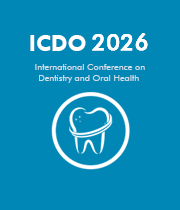Gingiva
Gingiva is a specialized type of tissue found in the mouth that serves as the protective covering of the bones and tooth roots in the oral cavity. It is often referred to as the gums and is essential to the health of the teeth. In dentistry, gingiva is an important tissue to assess and monitor since it can be a sign of many dental diseases. Gingiva is composed of an outer layer of stratified squamous epithelium and an underlying layer of loose connective tissue. This tissue is highly vascularized, meaning that it contains numerous blood vessels that provide nutrients to the teeth and also helps to maintain the health of the tissue. It is also highly innervated, meaning that it contains many nerve endings that are important in pain perception. The health of the gingiva is essential for the health of the teeth and the entire oral cavity. Healthy gingiva is firm and pale pink in color. It should also be firmly attached to the underlying tissue and teeth. Any changes in the color, shape, or texture of the gingiva can be a sign of a dental disease or infection. Gingival health is assessed during a dental exam. The dentist will look for signs of inflammation, such as redness, swelling, and bleeding. The dentist will also look for signs of periodontal disease, such as recession and pocket formation. If any signs of disease are found, the dentist may recommend treatment to restore the health of the gingiva. In conclusion, gingiva is an important tissue in the oral cavity that serves as the protective covering of the bones and tooth roots. It is essential to assess and monitor the health of the gingiva during a dental exam in order to prevent and treat dental diseases. Healthy gingiva is pale pink in color and firmly attached to the underlying tissue and teeth.

David Geoffrey Gillam
Queen Mary University of London, United Kingdom
Christopher Turner
Spacemark Dental, United Kingdom




Title : Evaluating hygienist follow up for head and neck oncology patients in secondary care: Results from a two cycle audit
Peter Basta, Newcastle Dental Hospital, United Kingdom
Title : Atypical facial pain unravelled
Christopher Turner, Spacemark Dental, United Kingdom
Title : New treatment of temporomandibular disorder through muscle balance and muscle regeneration by activation of quiescent muscle stem cells( satellite cells) with mitochondrial dynamics
Ki Ji Lee, National Reserach Foundation & Busan Medical University, Korea, Republic of
Title : Cutaneous, Cranial, skeletal and dental defects in patients with Goltz syndrome
Ali Al Kaissi, National Ilizarov Medical Research Center for Traumatology and Orthopaedics, Russian Federation
Title : The nature and management of dental erosion in patients with bulimia nervosa
Maya Fahy, The Royal Victoria, School of Dentistry, United Kingdom
Title : A systematic review on the early detection of oral cancer using artificial intelligence and electronic tongue technology
Maryam, Kardan Dental Clinic, Iran (Islamic Republic of)